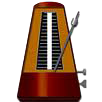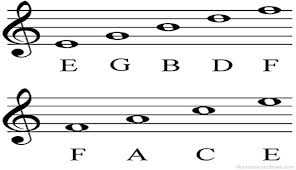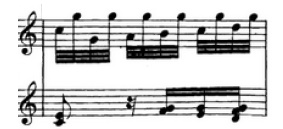Piano Lessons Online: Fur Elise – Lesson 7
Piano Lessons Online – Play Fur Elise – Lesson 7
Hey there again! Let’s continue our piano lessons online…
Today we will learn how to play the second half of the second movement of Beethoven’s Fur Elise. I just love this part of the song. If you can get this part down people will believe that you are a pretty good piano player.
Before you begin, you may want to review the first half of the second movement. Those three videos can be found here:
Piano Lessons Online: How To Play Fur Elise – Lesson 4
Piano Lessons Online: How To Play Fur Elise – Lesson 5
Piano Lessons Online: How To Play Fur Elise – Lesson 6
And just in case, here are links to the piano lessons online of the first movement of Fur Elise:
Piano Lessons Online: How To Play Fur Elise – Lesson 1
Piano Lessons Online: How To Play Fur Elise – Lesson 2
Piano Lessons Online: How To Play Fur Elise – Lesson 3
And here I am playing the whole piece: Online Piano Performance: Fur Elise.
This part of Fur Elise is generally played very quickly. But please do not worry about speed at first. Focus on learning how to play all the notes correctly at a slow and steady pace. Once you are comfortable playing the part correctly, then you can slowly begin to play the piece faster.
And now here is the fourth (and last) of our piano lessons online for the second movement of Fur Elise:
Metronome
I want to emphasize one more time that you should first learn how to play all of the notes from this lesson correctly at a slow, steady pace. Once you can get through the whole part without making any mistakes or breaking tempo, only then should you begin to try to build up your speed.
For this purpose you may want to use a metronome. A metronome is a device used to mark time by means of a regularly recurring clicking sound.
A metronome can be very useful when you are trying to increase your playing speed. I suggest practicing this part of Fur Elise both with and without a metronome.
You can easily find metronomes for free online. For example here: http://www.webmetronome.com
It’s also very nice to have an actual metronome that you can place near your piano or keyboard. Here is a link in case you are interested in purchasing one: A Variety Of Metronomes
Some Theory
Let’s continue looking at the sheet music for Fur Elise.
If you want to purchase the sheet music, you can click on the following link: Fur Elise sheet music.
Below is a transcription of the second half of the second movement of Fur Elise.
What Is With The Treble Clef On The Bass Staff?
This transcription begins with a treble clef on the bass staff. What is going on here? Well it’s quite simple. Recall from last week’s lesson that each of the lines and spaces on a staff represents a specific musical note. But it’s not the staff that determines what these notes are – it’s the clef. So the treble clef tells us
that the lines and spaces on the staff represent the following notes:
The lines and spaces would represent different notes if there was a bass clef there instead (we will learn the bass clef notes next week). The bass clef gives much lower notes. So if we want the left hand to play notes that are a bit higher than usual, it makes sense that we would use a treble clef instead of a bass clef to display those notes. Otherwise the transcription would be extremely messy if not impossible to write down.
As long as we just reviewed the treble clef notes, we may as well practice a bit. Try to name all of the notes in the first measure of the above transcription.
Note that both staves have treble clefs, so you should be able to name every note in this measure. Let’s begin with the upper staff. Did you get C, G, G, G, A, G, B, G, C, G, D, G? Note that not all of those G’s are the same. Some of them are an octave higher than others.
Now what about that lower staff? First we have a C and E being played together. This is followed by an F and G. Then we have an E and G. Finally we have a D, F, and G.
Also notice that the upper staff consists of only thirty-second notes. The lower staff has two eighth notes played together followed by a sixteenth rest and three sixteenth notes (well actually multiple notes being played simultaneously).
Take a few more minutes and go through the whole transcription. Name all of the treble clef notes. Do not worry about the bass clef notes yet. I realize that a few notes are actually on little lines above or below a staff. Do not be too concerned if you cannot name these notes – we will be talking about them soon in a future lesson. But give it a shot! It’s not too hard to figure out what notes they represent.
I hope that you are getting a lot out of these piano lessons online. Please continue practicing this part of the second movement of Fur Elise and the second movement as a whole. Next week we will begin to learn the third and final movement.
If you are interested in a more formal system of learning how to play the piano you may want to read my review of the PianoForAll system here: PianoForAll review
Until next week…
~ Steve




